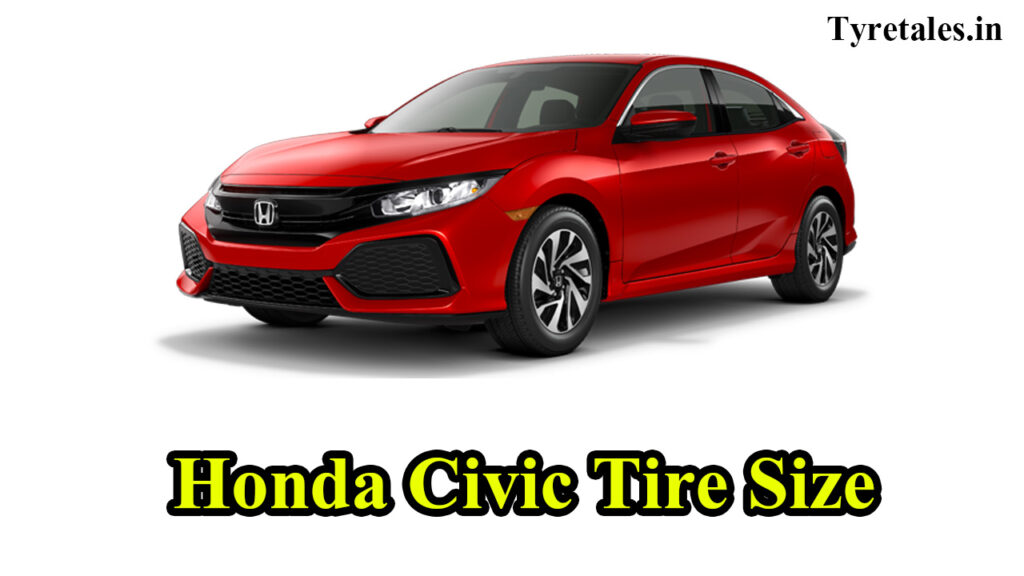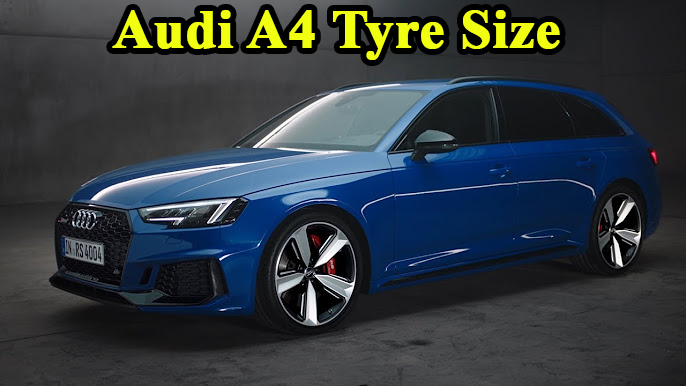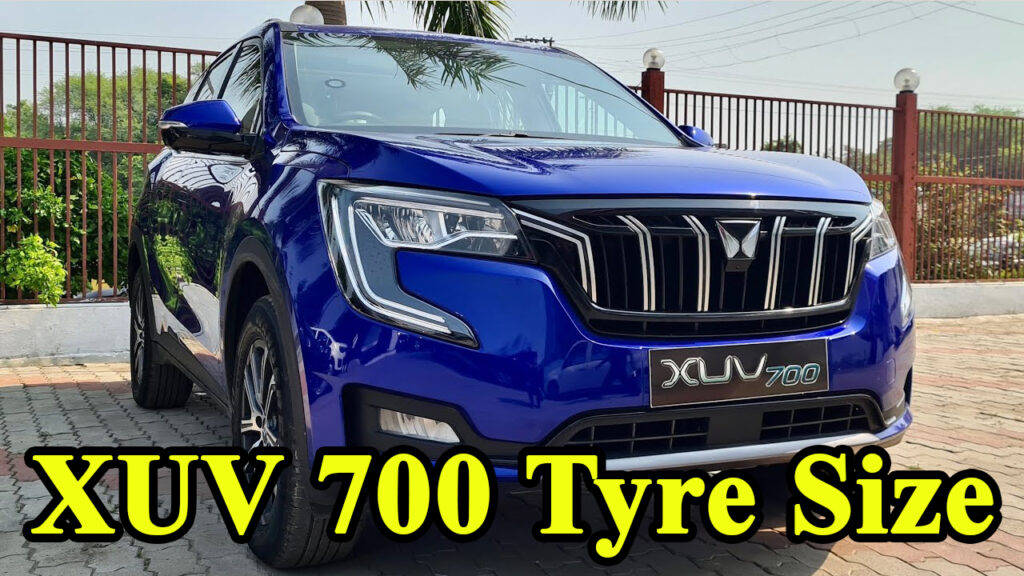Many drivers might consider tires merely as “black, round things” that get a vehicle from point A to point B. However, these seemingly simple components are the sole point of contact between a vehicle and the road, profoundly influencing safety, performance, and even fuel efficiency. For a reliable vehicle like the 2012 Honda Civic, a thorough understanding of its tires is not just beneficial but paramount. This comprehensive guide aims to demystify everything from identifying the correct tire size for specific Civic trims to interpreting sidewall markings, understanding the critical reasons behind manufacturer recommendations, and implementing essential maintenance practices that extend tire life and enhance the overall driving experience. The discussion will also cover common tire issues and effective troubleshooting methods.
Decoding Your Civic’s Tire Size: What Do Those Numbers Mean?
Every tire features a unique code on its sidewall, such as “P205/55R16 91H.” This sequence is far from arbitrary; it is a precise language detailing the tire’s dimensions and capabilities. The “P” at the beginning identifies it as a Passenger Tire (P-Metric). If “LT” were present, it would denote a Light Truck tire. The number “205” signifies the tire’s section width, measured in millimeters from one sidewall to the other. This particular tire is 205 millimeters wide. Following this, “55” represents the aspect ratio, a percentage that compares the tire’s section height to its width. In this instance, the sidewall height is 55% of the 205mm width.
The “R” in the code indicates Radial construction, the most prevalent type of tire construction today, where the plies run radially across the tire. While less common in modern passenger vehicles, “B” signifies belted bias and “D” stands for diagonal bias construction. The final numerical dimension, “16,” denotes the diameter of the wheel rim in inches.
Immediately following the size designation, “91H” constitutes the “Service Description,” which includes the Load Index (“91”) and Speed Rating (“H”). The Load Index, “91,” is a numerical code that specifies the maximum weight the tire can safely support when properly inflated. A higher number indicates a greater load-bearing capacity. For a load index of “91,” the tire can carry up to 1,356 pounds. The Speed Rating, “H,” is a letter that corresponds to the maximum speed the tire can safely sustain under its recommended load. An “H” rating means the tire is rated for speeds up to 130 mph. Understanding these specifications is vital, as they define the tire’s performance envelope, which is critical for safety and ensuring the tire matches the vehicle’s design and intended use. For example, a Honda Civic Si, with its performance-oriented nature, typically comes with V or W speed-rated tires , and fitting a tire with a lower speed rating could compromise safety.
The detailed breakdown of tire markings, especially the aspect ratio and rim diameter, is particularly important for comprehending concepts like “plus-sizing.” This practice involves fitting larger rims with lower-profile tires to maintain the overall tire diameter. This understanding directly connects to later discussions on speedometer accuracy and the functionality of advanced safety systems like Anti-lock Braking Systems (ABS) and Traction Control Systems (TCS).
To provide clarity on the appropriate tire sizes for various 2012 Honda Civic trims, the following table consolidates information from multiple sources, offering a quick reference for owners:
| Trim Level | Tire Size | Speed Rating | Inflation (PSI F/R) | OE Tire Brands (Examples) |
| DX | P195/65R15 | H | 32 PSI/32 PSI | Firestone Affinity Touring S4 FF |
| LX | P195/65R15 | H | 32 PSI/32 PSI | Firestone Affinity Touring S4 FF |
| EX | P205/55R16 | H | 32 PSI/32 PSI | Continental ContiProContact |
| EX-L | P205/55R16 | H | 32 PSI/32 PSI | Continental ContiProContact |
| GX | P195/65R15 | H | 32 PSI/32 PSI | N/A |
| HF | P195/65R15 | S | 32 PSI/32 PSI | Bridgestone Ecopia EP20 |
| Hybrid | P195/65R15 | S | 32 PSI/32 PSI | Michelin Pilot MXM4, Bridgestone Ecopia EP20 |
| Hybrid-L | P195/65R15 | S | 32 PSI/32 PSI | N/A |
| Si | P215/45R17 | V or W | 32 PSI/32 PSI | Dunlop SP Sport 5000 |
The Critical Importance of the Right Fit: Why Manufacturer Recommendations Matter
While a tire might physically fit a 2012 Honda Civic, selecting a size different from the manufacturer’s recommendation can have profound, often unforeseen, consequences. Honda, like all reputable vehicle manufacturers, invests substantial resources in engineering the intricate relationship between the vehicle and its original equipment (OE) tires. The recommended tire size, typically found on the driver’s side door jamb placard or in the owner’s manual, is chosen to optimize various aspects of the vehicle’s performance and safety.
Deviating from these specifications can significantly impact vehicle performance. The OE tire size is meticulously selected to ensure optimal handling, stability, and braking capabilities for the Civic. Using an incorrect size can compromise traction, leading to increased stopping distances and reduced overall control, particularly during emergency maneuvers or in adverse weather conditions. Furthermore, an improper tire size can increase rolling resistance, forcing the engine to work harder, which in turn reduces fuel efficiency.
The accuracy of the speedometer and odometer is also directly tied to the original tire’s rolling circumference. If a taller tire is installed (upsizing), its larger circumference means it travels a greater distance per revolution. Consequently, the speedometer will display a speed
slower than the vehicle’s actual speed, and the odometer will record less mileage than truly traveled. Conversely, installing a shorter tire (downsizing) results in a smaller circumference, causing the tire to spin faster. This will lead to the speedometer displaying a speed
faster than actual, and the odometer recording more mileage. While some modern vehicles possess adaptive systems that can compensate for minor changes, significant deviations in tire size often necessitate reprogramming or recalibration of these systems to ensure accurate readings.
Modern vehicles, including the 2012 Civic, are equipped with sophisticated safety systems such as ABS, Traction Control, and Stability Control. These systems rely on precise data from wheel speed sensors to function correctly. They continuously compare wheel speeds relative to each other and to the overall vehicle speed to detect slippage or loss of control. Altering the tire size, especially if there is a substantial difference in circumference from the OE specifications, can disrupt these calculations, potentially “confusing” the systems. This confusion might cause them to activate unnecessarily or fail to engage when genuinely needed. For instance, an ABS system might misinterpret wheel rotation data if the tire’s circumference is significantly different from what it’s calibrated for. It is important to note that while some sources suggest these systems might tolerate a “few percent of wheel diameter” or a “slight difference” (up to 2% variation) , it remains a risk. Maintaining the same overall diameter, often achieved through “plus-sizing” (using larger rims with lower profile tires to keep the overall diameter consistent), is crucial to minimize these potential negative effects.
Beyond performance degradation, using incorrect tire sizes can lead to direct safety hazards and warranty implications. Honda explicitly states that vehicle modifications, including the use of improper tire sizes, may void the vehicle’s warranty for affected components. This makes adherence to manufacturer guidelines a prudent choice. Furthermore, ill-judged tire size changes can result in physical contact with various vehicle components, such as fender liners, suspension parts, electrical lines, or even fuel system components, causing damage ranging from minor rubbing to significant structural issues. In severe cases, this can lead to tire structural damage or blowouts. The National Highway Traffic Safety Administration (NHTSA) reported 622 fatalities from tire-related accidents in 2021 , underscoring the critical importance of proper tire selection for safety.
The implications of incorrect tire size extend beyond immediate safety concerns and visible damage. There are significant long-term wear implications for expensive drivetrain and suspension components. For example, an increase in tire size can lead to accelerated drivetrain wear and place serious strain on the transmission, brakes, axles, CV joints, and differential components. This cumulative damage, often unseen initially, represents a substantial financial burden and a compelling reason to adhere to manufacturer recommendations.
Choosing the Best Tires for Your Driving Style and Climate
Once the correct size for a 2012 Civic is determined, the next crucial step involves selecting the appropriate type of tire. This decision should align with driving habits, local climate, and performance expectations.
Detailed Breakdown of Tire Types:
- All-Season Tires: These are the most versatile option, offering a balanced performance in both wet and dry conditions, and are generally capable of handling light snow. They typically provide a longer tread life than seasonal tires and offer a comfortable, quiet ride. From an economic standpoint, they are cost-effective as they eliminate the need for seasonal tire changes. However, all-season tires represent a compromise; they do not offer the specialized, optimal performance of dedicated summer or winter tires in extreme conditions. Braking, cornering, and acceleration might not be as precise as with performance-oriented tires. They are best suited for drivers in regions experiencing mild summers and winters with only occasional snowfall. Most new cars sold in the American market come equipped with all-season tires.
- Summer Tires: Engineered for optimal performance in temperatures above 7°C (45°F) , summer tires feature a shallower, stiffer tread pattern designed for excellent grip on both dry and wet surfaces. They excel at maximizing precise handling, cornering, and braking capabilities. The primary drawback is their significant loss of effectiveness and safety in cold weather (below 7°C/45°F), snow, or ice, where their compound stiffens and grip diminishes. Their softer compounds can also lead to quicker wear , and they may contribute to increased fuel consumption. These tires are ideal for high-performance vehicles or drivers who prioritize maximum grip and dynamic handling in consistently warm climates.
- Winter Tires: These tires are specifically designed for safe driving in temperatures below 7°C. They feature deeper, more numerous notches in their tread pattern for superior traction on snow and ice. Their unique, more supple rubber compound allows them to remain flexible in freezing temperatures, maintaining crucial grip. In snowy conditions, winter tires can significantly reduce braking distance compared to summer tires. However, they wear rapidly in warm weather and can lead to increased road noise and reduced fuel efficiency when temperatures rise. Winter tires are essential for drivers in regions that experience harsh winters with frequent snow and ice.
- Performance/Touring Tires:
- Performance Tires: These tires prioritize superior handling, speed, and braking performance, often utilizing softer rubber compounds for maximum grip. They are ideal for sporty Civics, such as the Si model, or for drivers who enjoy spirited driving. The trade-offs include a shorter lifespan due to the softer rubber, potentially more road noise, and slightly reduced fuel efficiency.
- Touring Tires: Designed for long-distance comfort, a quiet ride, and durability. They are often all-season tires. Touring tires are a good choice for highway driving and daily commutes where comfort and longevity are the primary considerations.
Beyond the general type, several other criteria are important for tire selection:
- Treadwear Rating: This numerical value (e.g., 400, 600) indicates the expected lifespan of the tire compared to a reference tire under controlled testing. Higher numbers generally signify better durability and a longer life. A common estimation is to add two zeroes to the rating for a ballpark mileage figure (e.g., a 420 rating suggests approximately 42,000 miles)
- Traction Rating: Graded from AA (highest) to C (lowest), this rating assesses the tire’s ability to stop on wet surfaces. An AA rating indicates superior wet traction.
- Temperature Rating: Graded A (best), B, or C, this measures the tire’s resistance to heat buildup during high-speed use. An “A” rating is optimal for high-speed or long-distance driving, and it is generally advisable to choose tires with at least an A or B rating
- Noise & Comfort: Tires with softer compounds, while offering a quieter ride, may wear faster. Conversely, harder compounds, often associated with higher treadwear ratings, can sometimes produce more road noise. Touring tires are typically designed for a quieter ride.
- Budget: Tires are available across a wide range of price points. It is important to balance quality with cost; while premium tires often offer superior performance and longevity, more budget-friendly options can still provide good value for less demanding driving conditions.
From a professional standpoint, many drivers tend to underestimate the significance of matching their tires to their actual driving conditions and local climate, rather than simply focusing on the vehicle itself. In regions that experience true four-season weather, investing in dedicated winter tires can fundamentally transform the driving experience, offering a significant enhancement in safety, even if all-season tires seem more convenient. Conversely, for a spirited driver with a Civic Si, the difference in handling and responsiveness with performance-oriented summer tires during warmer months is distinctly noticeable and can greatly enhance driving enjoyment.
Essential Tire Maintenance for Longevity and Safety
Proper tire maintenance is not merely about extending the life of tires; it is fundamental to ensuring vehicle safety, optimizing fuel efficiency, and maintaining ride comfort.
Maintaining Proper Tire Pressure: For most 2012 Honda Civic trims, the recommended tire pressure is 32 PSI for both front and rear tires. This crucial information can always be found on the driver’s side door jamb placard or in the owner’s manual. Maintaining correct tire inflation is paramount for several reasons: it ensures the right amount of traction between the vehicle and the road, absorbs shocks effectively, and allows for precise steering. Proper inflation prevents increased friction, excessive heat buildup, and the risk of tread separation or blowouts, all of which are serious safety hazards. Furthermore, correctly inflated tires can improve gas mileage by up to 3% and ensure even tread wear, thereby extending the tire’s lifespan. Conversely, over-inflation can lead to a “harder” or bouncier ride and reduced traction. It is recommended to check tire pressure at least once a month, and ideally before any long trips or every time the vehicle is refueled, always ensuring the tires are cold for an accurate reading. The Civic’s Tire Pressure Monitoring System (TPMS) will alert the driver to significant drops in pressure.
The Power of Rotation: For a Front-Wheel Drive (FWD) vehicle like the 2012 Honda Civic, tire rotation should typically be performed every 5,000 to 7,500 miles. Owners should always consult their vehicle’s owner’s manual for precise recommendations. Regular rotation is essential because it ensures even tread wear across all four tires, which extends their overall life and helps maintain the vehicle’s handling balance. In FWD vehicles, the front tires bear the brunt of steering and propulsion, causing them to wear faster than the rear tires. The most common rotation patterns for FWD vehicles involve moving the front tires straight back and crossing the rear tires to the front, often referred to as “Forward Cross” or “Rearward Cross” patterns.
Balancing Act: Wheel Balancing vs. Alignment: It is common for drivers to confuse wheel balancing with wheel alignment, but they are distinct services. Wheel balancing corrects any uneven weight distribution within the tire and wheel assembly. Signs that balancing is needed include vibrations felt in the steering wheel or seat, or the appearance of a “cupped” wear pattern on the tire. Balancing should be performed systematically whenever tires are replaced or refitted, and anytime a vibration is detected.
Wheel alignment, on the other hand, involves adjusting the angles of the Civic’s suspension components to ensure the tires make proper contact with the road. This is not an adjustment of the wheels themselves, but rather the system that connects them to the vehicle. Indications that a wheel alignment is necessary include the vehicle pulling to one side, uneven tire wear (particularly on the inner or outer edges), an off-center steering wheel, or unusual vibrations while driving. Alignments are generally recommended once a year or every 10,000 miles , and are also advisable after hitting a significant pothole or curb, or when replacing suspension components. Differentiating between these two services and recognizing their specific symptoms empowers vehicle owners to accurately diagnose issues, ensuring they seek the correct service rather than a generic “tire check.”
Checking Your Tread Depth: Adequate tread depth is paramount for maintaining traction and grip on the road, especially in wet or slippery conditions, and for resisting hydroplaning. Several methods can be used to check tread depth:
- Tread Wear Indicator Bars: These are small, raised bars molded into the main grooves of the tire. If the tire tread has worn down to be flush with these bars, it signifies that the tire has reached 2/32″ of tread remaining, which is the legal minimum in most regions, and it is time for replacement.
- The Penny Test: A widely known method, this involves inserting a penny into the tire tread with Abraham Lincoln’s head facing down. If the top of Lincoln’s head is fully visible, the tread depth is 2/32″ or less, indicating the need for new tires.
- The Quarter Test: Many tire professionals now recommend replacing tires when the tread reaches 4/32″ for enhanced safety, particularly in wet weather, as traction and stopping power significantly decrease below this depth. To perform this, use a quarter with George Washington’s head facing down. If the top of his head is visible, it is advisable to consider replacement soon.
- Tread Depth Gauge: For the most accurate measurement, a dedicated tire tread depth gauge, available at auto parts stores, can be used.
While the penny test indicates the legal minimum, prioritizing the quarter test as a proactive safety measure, especially for wet conditions, demonstrates a higher standard of care and understanding of tire performance.
Common Tire Concerns and Troubleshooting for Your 2012 Civic
Understanding common tire issues and how to address them can save time, money, and enhance safety for 2012 Honda Civic owners.
Understanding Uneven Wear Patterns: Uneven tire wear is a frequent concern for Civic owners and often points to underlying mechanical problems.
- Causes: The primary culprits include improper wheel alignment (such as camber, toe, or caster misalignment), worn suspension components, or incorrect inflation pressure.
- Types of Wear:
- Excessive inner or outer edge wear is commonly a symptom of camber misalignment, where the wheel is not properly angled relative to the vehicle’s body.
- Cupping or scalloping presents as uneven wear with alternating worn and unworn spots on the tread. This is often caused by worn suspension components or excessive vibrations within the vehicle.
- Center wear typically indicates that the tire has been consistently over-inflated.
- Shoulder wear (on both edges of the tread) usually points to chronic under-inflation.
- Action: Regular visual inspection of tires is crucial for early detection. If uneven wear is observed, it is vital to have a professional diagnose the precise cause to prevent further damage and ensure safe operation. Understanding the direct link between specific wear patterns and their root causes (alignment, suspension, inflation) provides actionable diagnostic information, empowering the owner to address the problem effectively rather than just reacting to the symptom.
TPMS Light: What it Means and How to Troubleshoot/Reset It: The 2012 Honda Civic is equipped with a Tire Pressure Monitoring System (TPMS). The TPMS warning light, often depicted as a flat tire or a horseshoe with an exclamation point, illuminates to indicate an issue with tire pressure.
- Understanding the Light:
- A solid TPMS light indicates that one or more tires have low or high pressure.
- A flashing TPMS light (which may then turn solid) signals a problem with the TPMS system itself, such as a defective sensor, a low or dead sensor battery, or a software/hardware malfunction.
- Troubleshooting & Resetting:
- Check All Tire Pressures: The initial and most critical step is to manually check and adjust the pressure in all four tires to the recommended PSI (32 PSI for most Civics).
- Drive to Calibrate: After adjusting tire pressures, drive the Civic for approximately 30 minutes cumulatively at speeds between 30-65 mph. The system is often designed to recalibrate automatically under these conditions.
- Manual Reset (if applicable): Depending on the specific trim and technology of the 2012 Civic, various manual reset procedures may apply:
- For models with a Display Audio Touchscreen, navigate to Home -> Settings -> Vehicle -> TPMS Calibration -> Calibrate.
- For models with Steering Wheel Buttons/Driver Information Display, scroll to Vehicle Settings -> TPMS Calibration -> Calibrate. Older models might require navigating through MENU -> Customize Settings -> TPMS Calibration -> Initialize -> YES.
- If the Civic has a dedicated TPMS Button (typically located to the left of the steering wheel), press and hold it until the warning light blinks twice.
- Persistent Light: If the TPMS light remains on or continues to flash after these steps, it strongly suggests a system malfunction, such as a faulty sensor or a depleted sensor battery. In such cases, professional diagnosis by a qualified technician is highly recommended. Providing a step-by-step troubleshooting guide for the TPMS light, including different reset methods, offers practical, actionable solutions for owners.
Conclusion: Drive Confidently with Well-Maintained Tires
The journey through the intricate world of the 2012 Honda Civic’s tires has covered deciphering crucial sidewall codes, understanding why the correct fit is non-negotiable for optimal performance and safety, and delving into the nuances of selecting the ideal tire type for varying driving styles and climates. Furthermore, the discussion emphasized the essential maintenance practices—proper inflation, regular rotation, precise balancing, and accurate alignment—that form the bedrock of tire longevity and vehicle integrity.
Tires represent a significant investment and are, unequivocally, the primary safety feature of any vehicle. Proactive tire care is not merely about achieving long-term cost savings; it is fundamentally about ensuring that every journey in a Honda Civic is as safe, efficient, and enjoyable as possible. Neglecting tire health can lead to compromised handling, reduced fuel economy, accelerated wear on critical vehicle components, and, most importantly, increased safety risks. Therefore, it is strongly advised that tire checks become a regular, integral part of any vehicle maintenance routine, rather than waiting for a problem to manifest. Well-maintained tires are the unsung heroes of a superior driving experience, making all the difference on the road.




